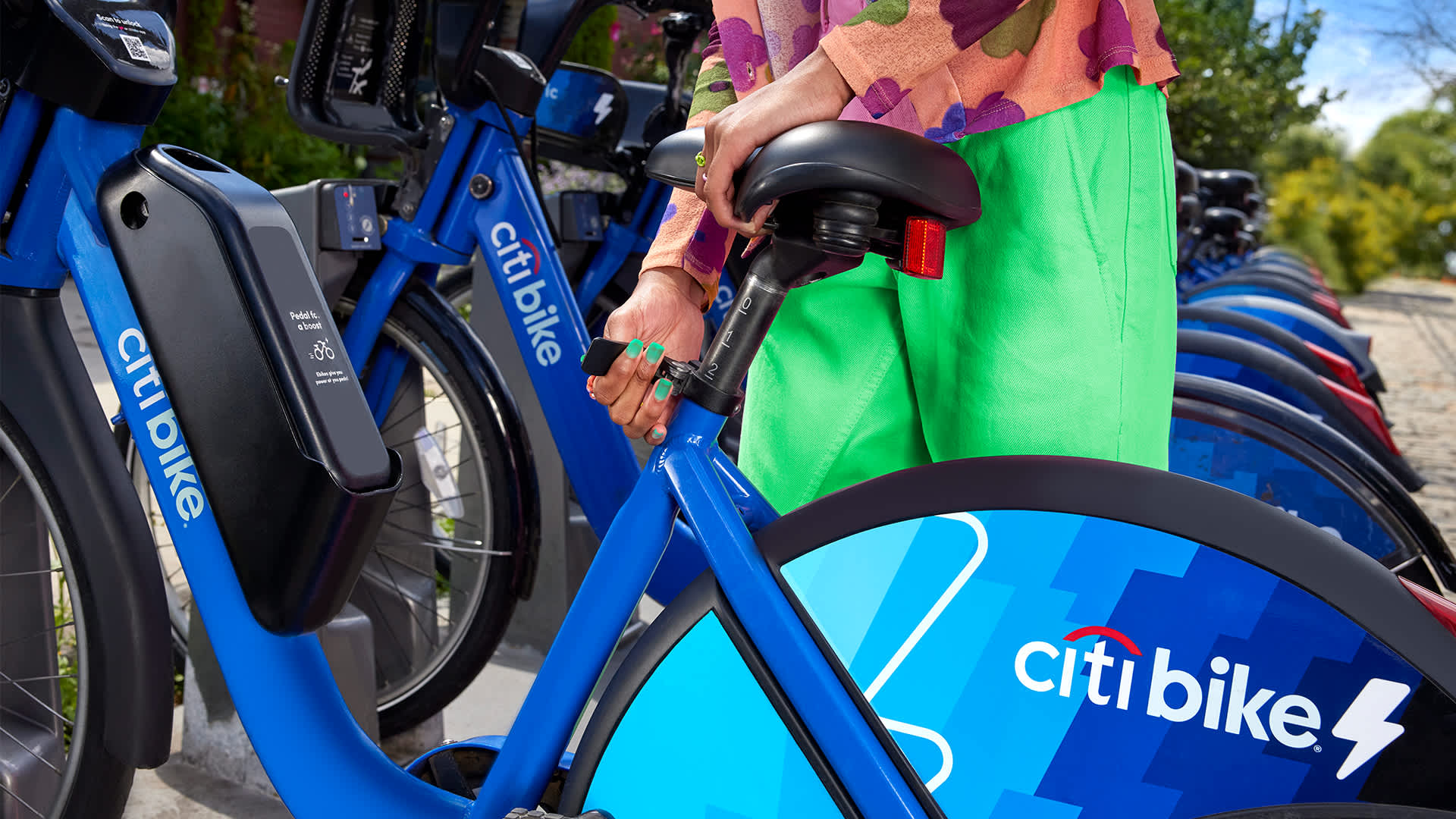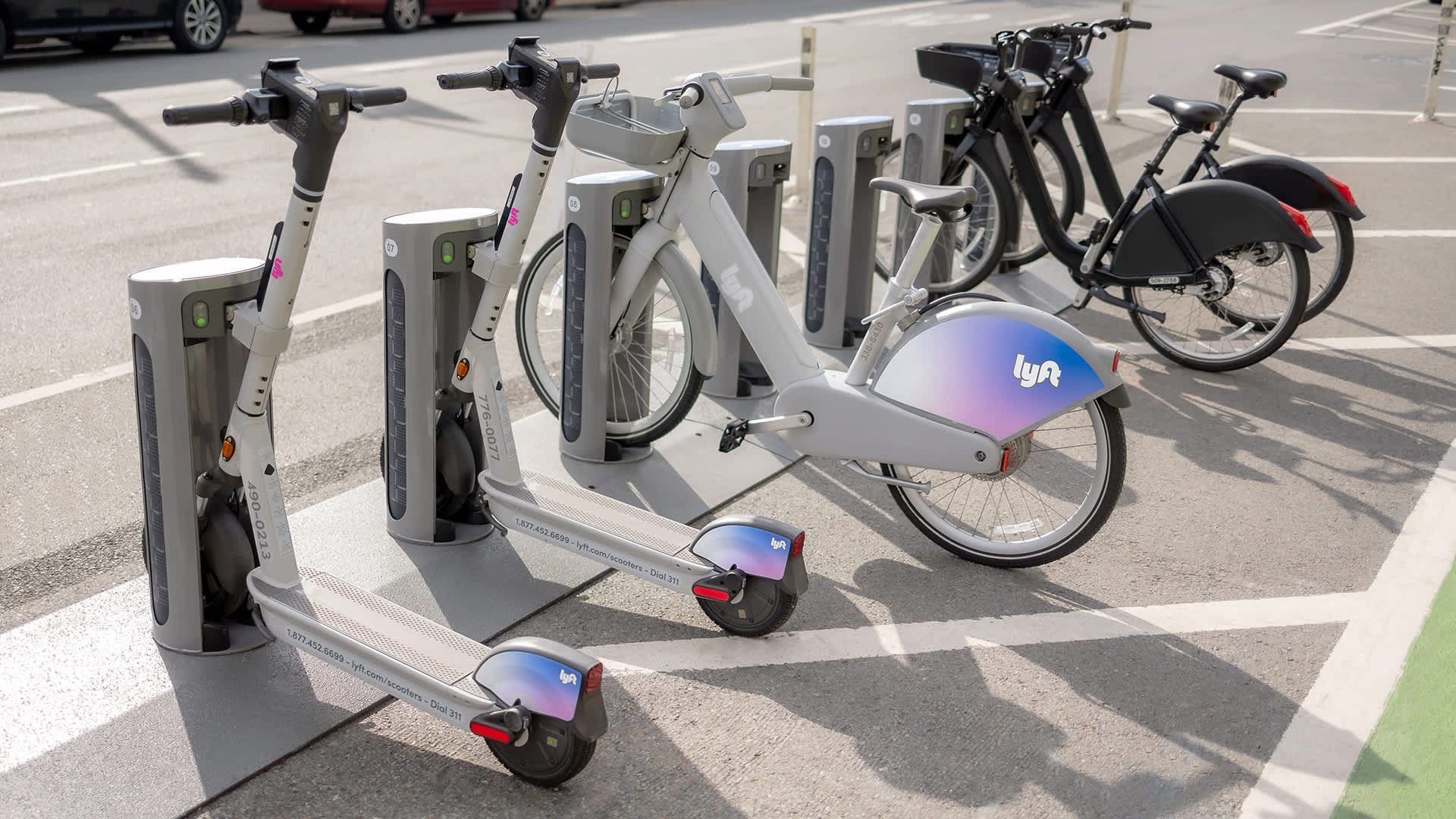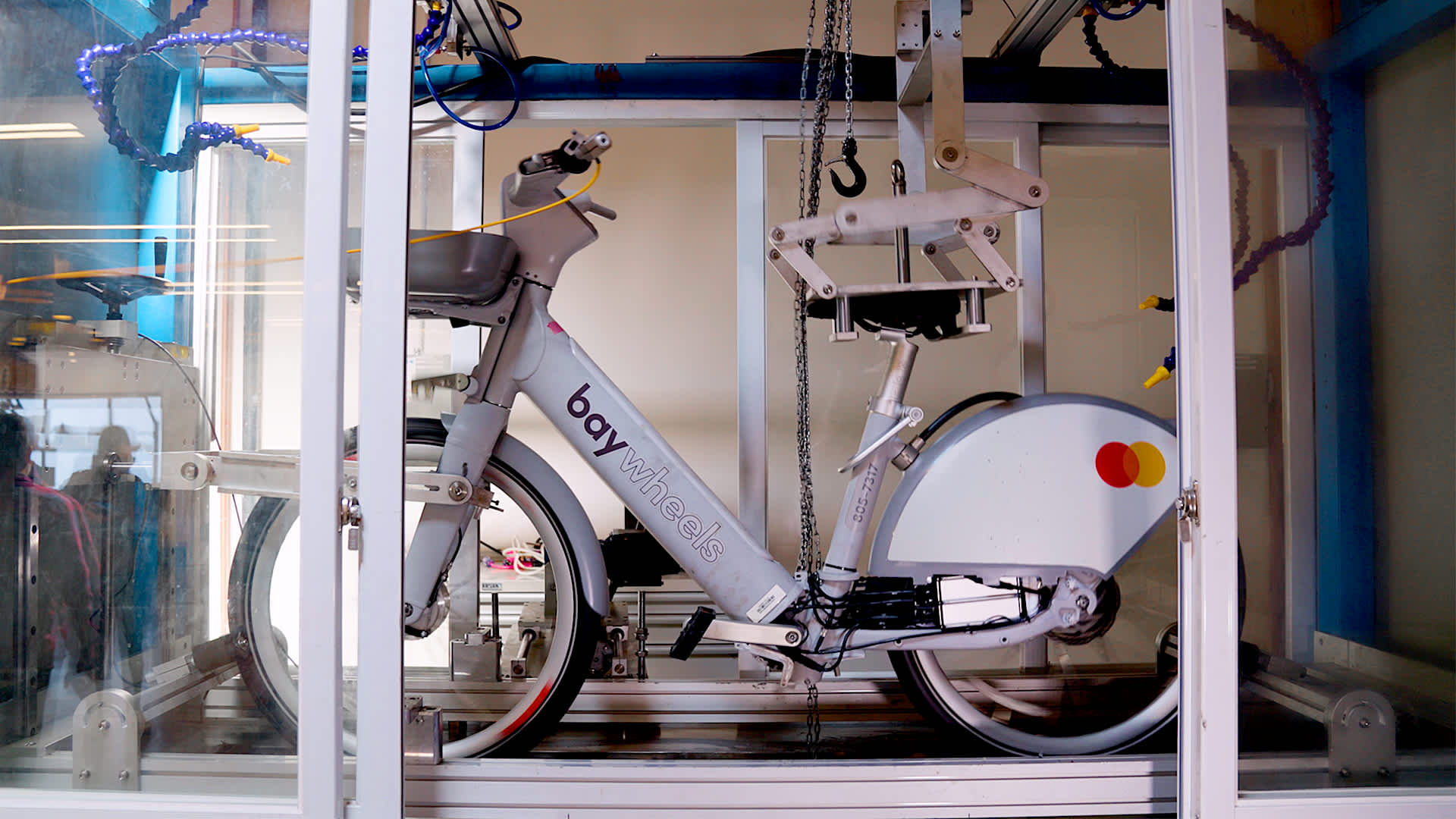
We already know from data that e-bikes are better for the environment than full-size cars, even electric vehicles. In some cases, shared e-bikes are actually greener than traditional shared bikes, too. And they’re more accessible, with pedal assist or throttle technology making it possible for more types of people to cycle more often with less physical stress on their bodies.
Yet e-bikes still have one big weakness — an “Achilles’ pedal,” if you will. To function, they need to be charged on a recurring basis. To solve this logistical challenge Lyft, a leading bike-share operator in the U.S., has come up with a new in-ground charging solution, the Lyft Pillar. Deploying it at only 20% of its bike docking stations is enough to allow the company to keep 80% of its fleet charged, consistently.

Before we dive into how this new innovation works, let’s explain how e-bikes get charged today.
How it works now
Right now, Lyft mainly keeps its e-bikes charged via battery-pack swaps. When a rider parks a nearly discharged e-bike, Lyft’s computer servers get an alert. Lyft’s systems and human analysts aggregate all of the e-bikes needing charging around the same time in a given city and dispatch vans or trucks driven by bike-share field operations staff to swap the discharged batteries out in the field.
Obviously, this process is far from as efficient as it could be — and using vehicles to collect bikes for battery swapping releases more emissions into the environment. In fact, Lyft has calculated that battery swapping accounts for 10% of all the CO2 and other greenhouse gas emissions generated over the working lifespan of its 2021 next-generation e-bike models.
A new pillar of the community
Lyft is currently testing a solution that could drastically reduce these emissions, first in Chicago and then in other cities in the coming months and years.
With the new Lyft Pillar dock, the station itself can automatically recharge the e-bike out in the field over a matter of several hours. This cuts the number of miles that Lyft’s battery-swapping vehicles need to travel in half.
However, electrifying the existing docking stations is no trivial task: The stations need to be hooked up safely and securely to each local power grid. This not only requires navigating a maze of local rules and regulations but also busting through the pavement with jackhammers to reconfigure wires underground.
While they are being worked on, the stations may be moved, reduced, or put out of service for some period of time, inconveniencing riders and limiting the throughput of the bike-share system. In other words, it’s a complicated, expensive, and often lengthy permitting and construction process — one that doesn’t happen overnight.
So earlier this year the Lyft team, namely former systems-modeling engineer Jennifer Uang, got to work.
Running the numbers
“The question I was trying to answer is: ‘What would Lyft be able to do to optimize charging?’ ” Uang tells Rev in a video interview. She wondered if the company could keep most of its e-bikes charged by electrifying only a select few of the most popularly used stations — the stations where many e-bikes are picked up from and dropped off throughout the day.
Uang used a real-world Lyft historical e-bike usage data simulation that allowed her to test the impact of electrifying any number of Lyft’s existing bike-docking stations in a given city, as well as selecting the specific locations of the stations to be electrified.
Almost all bikes in San Francisco cycle through just 5% of the city's 228 stations.
Looking at the historic ride data in San Francisco, Uang discovered that almost all the bikes cycled through one or more of just 28 out of 550 stations in the city. That’s only about 5% of the stations, but by simulating the electrification of another 15%, or 83, of heavy-use stations Uang saw that approximately 80% of the e-bike fleet in the city could remain charged without the need for battery swaps. Uang ran the simulation to test what would happen over many months of electrification. The results held up.
In essence, the natural usage patterns of riders — plus infrastructure improvements by Lyft — would keep most bikes juiced up constantly.
Uang also simulated an important communication to riders: When a rider opened the Lyft app or local bike-share smartphone app to scan and check out a bike, it would direct them to the bikes with batteries that are mostly charged, allowing the ones that are still only partly or minimally charged to remain at the dock to continue charging.
Another design tweak Uang proposes in her simulation would be allowing riders to pre-plan their destination station — if it’s nearby and has charging capability, the app would allow the rider to take a bike with a lower-charged battery so that it could be cycled into a station where it would receive a charge.
Through these subtle but meaningful communications to riders, and through the much more noticeable, effortful, and complex electrification of bike-share stations, Lyft will be able to keep more bikes charged and available, make riders happier, and reduce its environmental footprint.
Lyft calculates that the impact these solutions would have on the environment is powerful, reducing the total distance traveled by Lyft’s battery-swapping vans and trucks by 307,000 miles, saving 132 tons of CO2 emissions a year in New York City by 2025.
Not surprisingly, the company is already testing station electrification at several locations out in the field. Lyft says it aims to share more in the future as its plans progress.
This content provided in this article is for informational purposes only.


